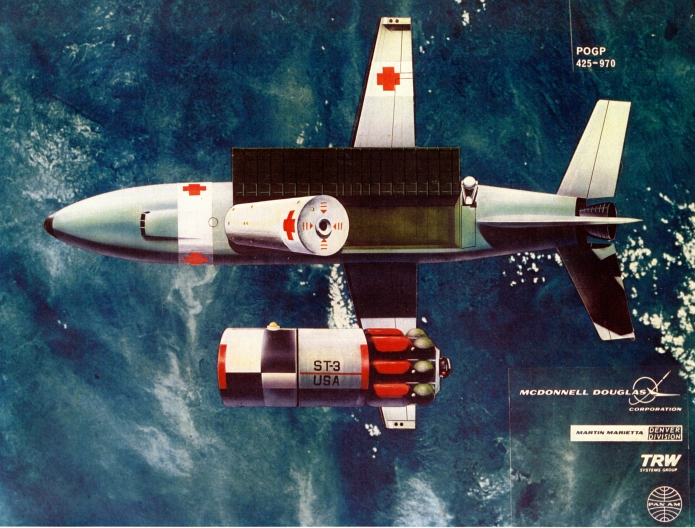This piece of art depicts the McDonnell-Douglas “Drawbridge” orbiter in orbit delivering a satellite. Note that the wing are deployed, even though they would be folded up during entry. The geometry of the craft was such that in order to get the cargo bay door open and payloads safely in and out, the wing needed to fold down out of the way.
This points out one of the reasons why you don’t often see a whole lot of “cool” stuff in aerospace… everything has tradeoffs. And needing the wings to constantly go up and down is a bit of a headache. When it comes to spacecraft, mass is a primary priority; the mechanisms needed to deploy the wings weight a lot… never mind the mechanisms needed to retract the wing again. As an example, the real space shuttle orbiter had no landing gear retraction system. And why should it? The landing gear is hardly something the Orbiter would ever need to retract. That could be done by the ground crew without adding weight and complexity to the craft itself.
Note that the Orbiter and the payload here seem to have not NASA markings, but Red Cross markings. I suspect that a number of variants of this piece of art would have been produced with several different markings (NASA and Pan Am being the obvious ones), but why exactly Red Cross? Dunno.
Also note that this might not be an actual “Drawbridge” design, as no extension mechanism for the wing s in evidence. This might be an oversight on the part of the artist; it might be that this was a fixed-wing design. Given the RCS thrusters on the wingtips, this is most likely *not* a Drawbridge.
I’ve uploaded the high-rez version of this artwork (11.2 megabyte 6271×4763 pixel JPG) to the APR Extras Dropbox folder for 2018-01, available to all APR Patrons at the $4 level and above. If you are interested in accessing this and other aerospace historical goodies, consider signing up for the APR Patreon.

